A binding choice
Over the centuries, solutions for binding a pair of boots to a pair of skis have got pretty good. Every modern solution, from 75mm to Xplore, has its champion. But unless you’ve tried them all, you won’t know for yourself which one suits you best.
Luckily there’s a lot of good and knowledgeable advice – but we all seek different pleasures in the snow, according to our different skills, our personal preferences, and the conditions and terrain we can get to. A wide look at the choices is always useful. Here’s ours, with some recommendations and a wee bit of guidance.
First of all – what do you want to do?
The first thing you should do when choosing bindings is to ask yourself the same question you ask when you choose new skis: Where are you going?
Are you into tours on flatter terrain? Or are you after peaks and steeps? Are you touring for turns, or do you prioritise comfort and distance?
What’s more, what are you carrying? If you’re out with a heavy rucksack, do you need to think about stability? Do you want something easy to repair if you’re out for days on end? Or something that’s not likely to break in the first place?t.
Boots are (very) important
And we can’t really talk about bindings without talking about boots. The stiffness of the shaft and sole are pretty decisive when it comes to your overall experience. The fit of the boot affects the pleasure of the tour. We definitely recommend setting some time aside to try some on – get guidance in a specialist shop, maybe, and find the shoe that best suits your use, skill level and age.
It’s a very bad idea to buy shoes without trying them on. If they don’t suit your feet or your intended use, it can pretty much ruin the whole experience. Beware of over-simplified claims like “You can’t turn with BC boots and bindings like you can with 75mm boots”. You can – just choose stiffer BC boots.
Generally speaking, we recommend going for boots from well-known, and preferably Norwegian, manufacturers who’ve made good ski boots for a long time. We don’t like to recommend any particular boot; the choice depends a great deal on fit and use. But you can’t go too far wrong with boots from the likes of Lundhags, ALFA, Alpina og Crispi.
Ski boots: selection and compatibility
Here are some tips for choosing the right boots for cross-country skis built for the backcountry, and for compatibility between boots and bindings.

A quick summary
Which bindings are usually chosen for which kinds of cross-country ski?
75mm or BC?
The telemark generation and those who learned to ski on “kandahar” and other wire bindings will probably never let go of 75mm bindings. This is a distinctly Norwegian tradition, after all, stretching back to the glory days of Sondre Norheim and his newly invented wicker straps in the late 1860s. This is fine by us –we’re doing our best to preserve Norwegian skiing history for the enjoyment of future generations.
One advantage of the 75mm norm is their flexibility. With the same bindings and skis, you can find shoes with the stiffness that suits you. You can chose 75mm bindings with a removable cable, too, which brings even greater flexibility in terms of boots and cables.
Broader skis and turns – 75mm
Wider mountain skis of more than 60mm at the waise often require more stiffness in boot and binding for the skier to be able to properly engage the steel edge. A stiff boot and a 75mm cable binding are great for descents (albeit this isn’t the only solution – as long as you have a boot stiff enough, BC Magnum bindings can be excellent for turns, too). Many 75mm cable bindings come equipped with plates and heel risers, making them more attractive for steeper skiing than BC bindings.
Our recommendation is to go for a BC Magnum or 75mm binding paired with stiffer boots on skis with a waist wider than 60mm.
For comfort, “hiking” and longer tours – BC
BC bindings offer the best experience if the main focus is on comfort and distance. One of the most common complaints against 75mm is that you have to bend the sole when you’re “walking”, which, given the rigidity of most 75mm boots, makes the 75mm system less comfortable than NNN-BC.
BC bindings offer a much larger selection of compatible boots, too; there’s more variation in stiffnesses, materials and fits. This might make make the choice a bit more difficult, but increases the chances of finding exactly the right boot.
BC bindings give the best experience for those principally focussed on comfort, frequent use, and longer tours.

For narrower skis and “langrenn” cross-country skiing
In most cases, we’d recommend NNN bindings, NIS plates and other standard “langrenn” (cross-country) bindings for use on skis built for tracks and unchallenging terrain.
The metal toe-pin in boots for these binding is 25mm width; they can be mounted on the lightest and narrowest mountain skis and serve for gentle use on the flats and for shorter days out. The bindings themselves aren’t as robust as their NNN BC and 75mm equivalents, and boots are invariably lighter, less insulated, and less stiff than options made for mountain use.

BC bindings – the popular choice
NNN BC bindings are mounted on the majority of cross-country skis built for the back country sold today. In the case of narrower skis of this type, they are by some distance the most common choice. These bindings generally work for the vast majority of skiers. But even here there are are a few options.
While the 37mm width of the metal-toe pin doesn’t change, BC bindings are available, however, in Auto, Manual, and Magnum options. All have advantages and disadvantages. The force required to lift your heel isn’t decided by the stiffness of the shoe but by a rubber flexor block mounted against the toe of your boot. This means that you can “walk” with a fairly stiff shoe. This rubber flexor can also be replaced or removed, allowing you to customise the level of resistance. Stiffer resistance translates to more control on the descent.
The beauty of these bindings is that they’re very comfortable to wear!
75mm (3-pin)
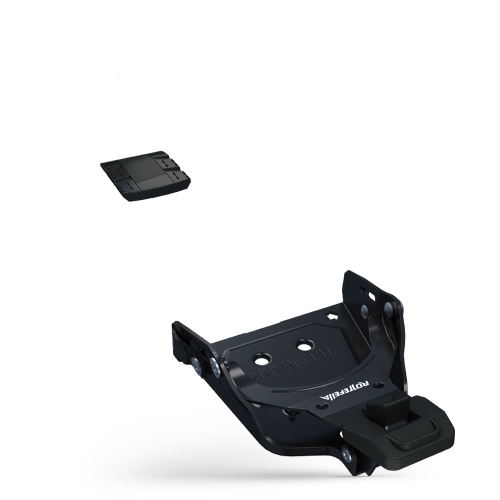
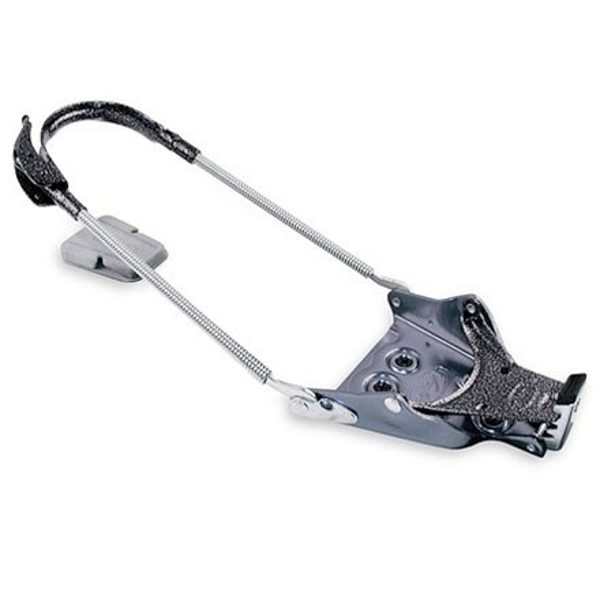
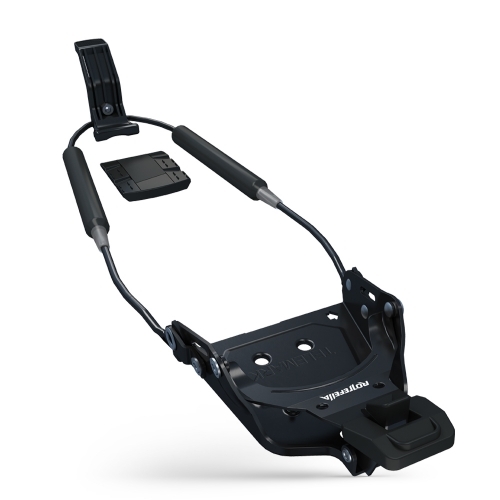
Telemark binding – for enthusiasts, stability and control on the descent, and dropped-knee tele-turns
Classics: 75mm bindings with three pins that fit into three holes on the characteristic “duckbill” sole, clamped at the front-foot.
There are also cable bindings (known as “wicker bindings” in Norway, recalling Sondre Norheim’s innovation in the 1800s, and “kandahar” bindings) with cables which run from the front binding, tightened around the heel. 75mm bindings are most popular among those who tour for telemark turns. In fact, these bindings are so stable you can use them on wider skis on groomed alpine slopes, assuming you have the skill. Many of us learned to ski on bindings like these, and they still have a very strong place in skiing history and in Norwegian skiing culture.
Telemark bindings are popular among those who want extra stability on descents. Telemark turns are a lot easier on bindings and boots like these.
The main disadvantage is that they’re somewhat heavier, which might tell over distances. They’re also comparatively wide, which can create resistance in deep snow, especially in broken trail – but this can be avoided with a plate for shimming the bindings up out of the snow.
We normally recommend 75 mm bindings for wide BC skis. For 75 mm bindings, you need boots adapted to the 75 mm binding system.
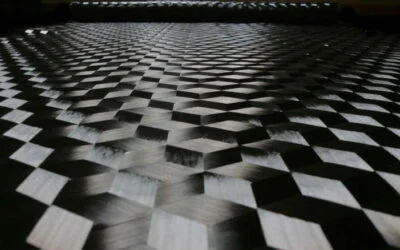
What are carbon skis really?
Is there really any such a thing as a “carbon ski”? Well… no. We explain why – and what carbon and fiberglass actually mean to ski construction.
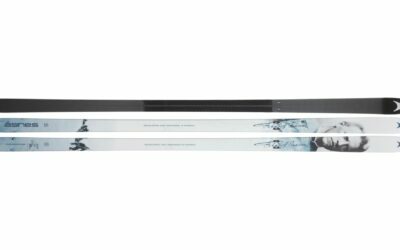
Waxless or waxable skis?
Buying new skis and not sure whether to choose waxable or waxless bases? Maybe you think grip wax is tricky. Maybe you find the convenience of waxless is enticing. Here’s your path through the pros and cons (and the science!) of both…

Prepping and waxing cross-country skis for the backcountry – simply
When we wax cross-country BC skis, the best approach is often the simplest. If you’re in the mountains for several days, you want something that works, well enough, without fuss, for most of the day. Luckily this isn’t rocket science
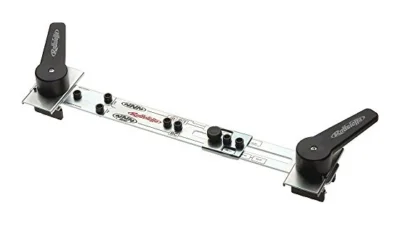
Mounting bindings on cross-country BC skis
If you’re going to mount bindings on cross-country skis built for breaking trail, you have a choice. You can let professionals do it for you and avoid water damage to the wooden core, screws sitting proud of the holes or crooked bindings… or you can bid farewell to your warranty cover, prepare the polyurethane glue and drill, and read on…
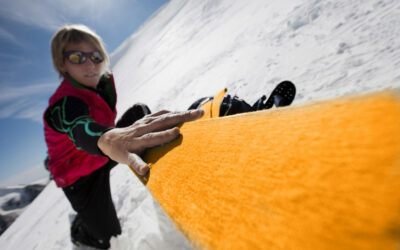
Myths about skins – busted
Not everything you hear about skins is right. We’re here to dish the skinny on skins, busting some misconceptions about your skins, complete with counter-evidence and tips garnered through trial and error in real snow, by real skiers, in actual Norway.

Understanding sidewalls
Sidewalls. All skis have them. Few of us know what they actually do. Join us as we explain how they affect the strength and properties of your skis.